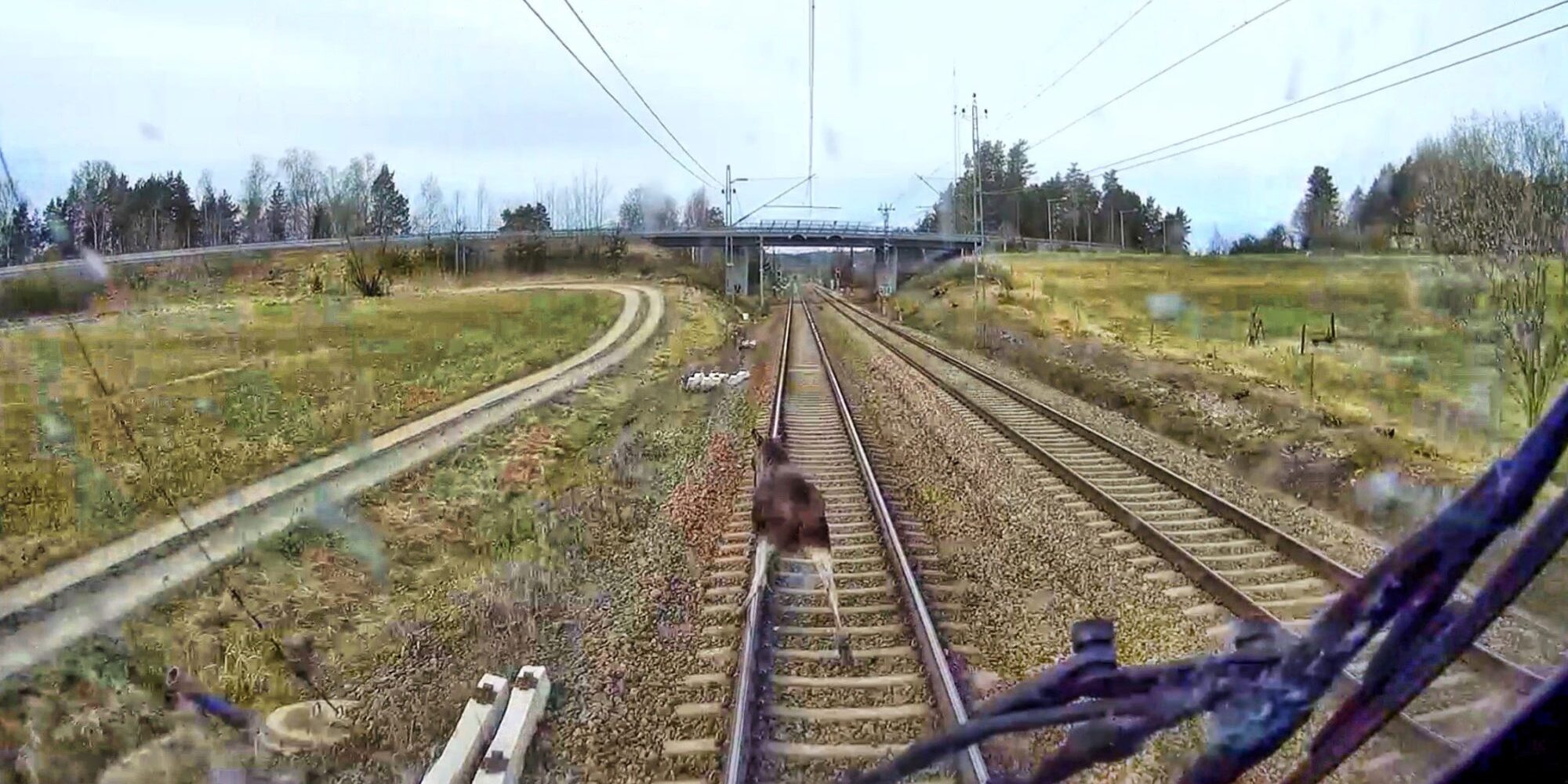
Scaring elks to avoid train accidents
Author
Published: 09 June 2021
Last updated: 09 June 2021
Contact persons
Research areas
Share article:
Preliminary results indicate it is possible to scare elks away from the railway track using sound.
It takes about a kilometer for a train at full speed to stop. To date we have not been able to solve the dangers of elks or other types of deer entering the railway track. Animal collisions pose major challenges for society, animal welfare, animal owners, railway companies, and not least for train drivers.
In the past 11 years, the number of animal collisions has varied from 1400 to almost 2800 per year in Norway. Elk, deer, domestic reindeer, and sheep stand out in the statistics as the most accident-prone animal species. Previous research has shown that these animals do not respond well to common train sound signals as such signals have no natural meaning to these animals.
– Our research has shown that it is possible to activate an escape response in these animals by using sounds that they associate with something “dangerous / scary”, says researcher Aina Winsvold at Ruralis.
– These are very positive results for our project – a project that aims to encourage these animals to move away from the railway line. Our experiments show a clear and distinct change in the behavior of the animals when they hear frightening sounds. ´
In Norway, almost 90 percent of elks left the feeding area when they were exposed to frightening sounds. When they heard natural sounds, such as woodpeckers and barn owls, however, very few elk left the feeding area, and they moved at a lower speed (displaying a weaker fear response).
As of today, there are no effective measures for preventing trains from colliding with deer. The most used measures, such as clearing vegetation along the railway and fencing off particularly congested areas, are very expensive. Such measures provide varying results and can even have unintended consequences such as acting as barriers for wild animals in the landscape. Animal fences also must be long enough and be combined with fauna passages where the animals can cross safely, to have satisfactory results.
In 2020, Ruralis, in collaboration with NIBIO and Inland Norway University of Applied Sciences, has investigated whether technology can be used to prevent wildlife collisions along the railway. The project has been funded by Bane NOR and the Railway directorate in Norway.
The aim is to lay a scientific basis for developing a warning system that will encourage animals to move away from the railway lines when trains are about to pass, without limiting the animals’ other movements in the landscape.
– In the project, we have worked closely with the Swedish University of Agricultural Sciences, explains Winsvold. The field work was carried out at two localities. First, at feeding sites during winter in Østerdalen, and second, at salt stone sites in Grimsö, Sweden during the summer.
– In the experiments, we used a technical unit for sound playback that can emit pre-programmed sounds, explains Winsvold. This includes both “natural sounds”, “scary sounds” and “no sound” (to make sure the animals do not just respond to any sound from the technical unit). The animals’ reactions to the sounds, and their subsequent behavior, was then filmed and analyzed.
The purpose was to identify signals that give rise to a fear response in the animals, which can then be used along the railway lines to encourage animals to move away from the railway track during the short time it takes for a train to pass by. No other novel technological solutions have so far demonstrated similar effects in Nordic conditions in scientific experiments. Throughout the project, these systems are now being tested with a high-quality experimental approach. – We want to find out how the animals react to different types of sounds, how long it takes from the signal is activated to the animal responds, and the behavior pattern of the animal after exposure to signals, states Winsvold.
Author
Published: 09 June 2021
Last updated: 09 June 2021
